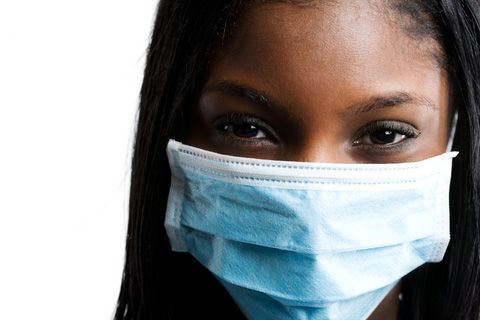Survey Documents Flu Fears

Americans' reactions to the outbreak of the H1N1 flu, aka the swine flu, may have trended lately toward being annoyed, but nearly half were also concerned five days ago that they or their family might actually get sick.
A survey by the Harvard Opinion Research Program at the Harvard School of Public Health found that 46 percent of 1,067 Americans polled on Wednesday, April 29, worried that they or someone in their immediate family might get sick from the new flu virus in the next 12 months.
The World Health Organization ranks this outbreak as a phase 5 incident, meaning that it has spread within two countries in one region of the world and that a pandemic is imminent. An upgrade to phase 6, or full-blown pandemic, would mean the virus was also spreading among humans in a third country in a second region of the world.
Here are some ways Americans are responding to the outbreak, the survey found:
- 59 percent are washing their hands or using hand sanitizer more frequently.
- 25 percent are avoiding places where many people are gathered, such as sporting events, malls or public transportation.
- 20 percent are avoiding people thought to have recently traveled to Mexico.
- 17 percent are avoiding Mexican restaurants or stores.
- 8 percent are wearing a face mask.
- 5 percent have bought a face mask.
- 5 percent are talking with their doctor about health issues related to swine flu.
- 4 percent of parents have kept their children home from school or daycare.
- 1 percent of people are getting a prescription for antiviral medications.
"It is a good sign that most people, though not all, are taking the most important precaution recommended by the Centers for Disease Control and Prevention to prevent the spread of swine flu: washing their hands," said Robert J. Blendon, a professor at the Harvard School of Public Health who headed up the survey project.
Beliefs about swine flu
The new influenza virus is different from a regular seasonal flu because it's a strain previously unknown to scientists and therefore one to which no one has immunity (unlike the seasonal flu and cold viruses, to which some of us are immune because we've had it before). For this reason, public health officials are preparing for the worst, even if the outbreak ends up sickening and killing "only" the numbers we are used to during a typical seasonal flu, or fewer. In the United States, the seasonal flu usually kills about 36,000 people.
Get the world’s most fascinating discoveries delivered straight to your inbox.
There are 985 lab-confirmed cases worldwide of the H1N1 flu as of early this morning, according to the WHO. The United States had 226 of those cases, and Mexico had 590 of them. There has been one death in the United States, and 25 in Mexico. Other cases (but no deaths) are known in Austria, Canada, Hong Kong, Costa Rica, Colombia, Denmark, El Salvador, France, Germany, Ireland, Israel, Italy, Netherlands, New Zealand, South Korea, Spain, Switzerland and the UK.
This flu, like a lot of emerging infectious diseases typically do, has sparked some unfounded fears. It was initially named "swine flu," but the World Health Organization renamed it the influenza A (H1N1) virus last week.
Possibly as a result of the early name's reference to swine, a moniker still being used by much of the media as a shorthand, 13 percent of Americans hold the false belief that they can get the new influenza from eating pork, the survey found. The virus includes components of human, avian and swine flu.
The virus is spread from human to human through the droplets we discharge when we sneeze or cough. So surgical face masks serve more to protect others from wearers' droplets than to protect the wearer from others' droplets. If you touch droplets on a surface and then touch your finger to your eyes or nose, a face mask won't do much good. That is why public health officials stress hand washing.
Still, about half of Americans (53 percent) believe that wearing a face mask could prevent them from getting sick from the swine flu, while more than three-quarters (78 percent) believe that wearing a face mask when sick would help keep them from getting others sick.
Study details
Others who worked with Blendon on the survey included John M. Benson, Gillian K. SteelFisher, and Kathleen J. Weldon of the Harvard, and Melissa J. Herrmann of SSRS/ICR. Fieldwork was conducted via telephone (including both landline and cell phone) for HORP by SSRS/ICR.
The margin of error for the total sample is plus or minus 3.6 percentage points.
This Harvard School of Public Health series is funded under a cooperative agreement with the Centers for Disease Control and Prevention.
- All About the Flu
- Video – Worst Case Scenario for Swine Flu
- Top 10 Deadly Diseases That Hopped Species



